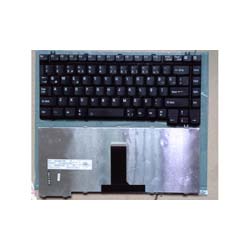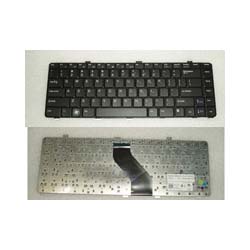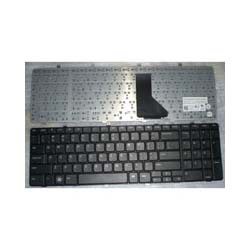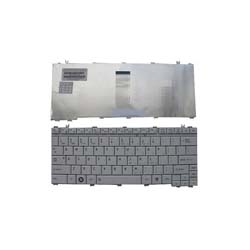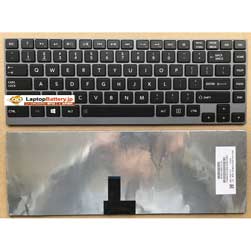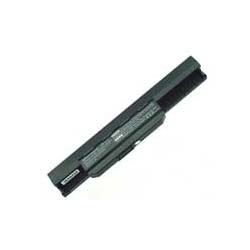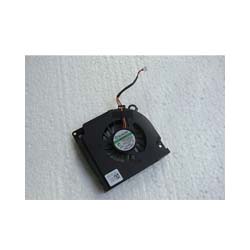So your TOSHIBA Satellite M70 Keyboard keys stick for one reason or another. Perhaps you spilled a drink on it, or you just like to eat and surf the web at the same time.
I had the misfortune of spilling some Mountain Dew on my keyboard about two years ago, and this method has kept my keys working smoothly ever since. Cleaning your laptop is simple, but time consuming. Take your time and do not try to force anything and you should have a perfectly functioning keyboard once more!
For any sticky situation, following these steps will make your keyboard work and feel like new!
Step 1: Shut Down … Fast!
If you just spilled something on your TOSHIBA Satellite M70 Keyboard, shut your computer down as fast as possible!
Your first order of business is to shut down your computer and remove the battery -.. As quickly as possible if you spilled liquid on it Force shut down your computer by holding the power button until it turns off Any data loss during this process should be minimal and less costly than any shorted-out hardware.
Step 2: Gather Materials
To give your laptop a thorough cleaning, you will need:
- A cup or container large enough to hold all the keys on your keyboard
- Rubbing alcohol
- Cotton swabs (Q-Tips)
- Dish soap (without bleach) or some other mild detergent
- Paper towels
- Flathead screwdriver
- Towel
Most of these supplies are probably already sitting around your house or apartment, but I doubt you’ll spend over $ 10 if for some reason you need to purchase everything.
Step 3: Initial Wipedown
Soak up as much of any spilled liquid as you can with a paper towel or rag. Make sure to get all surfaces of your computer, including the screen.
It’s quite possible that you splashed liquid into every deep dark crevice of your computer during your spill. Use your cotton swabs if necessary, but do not worry about getting in between the keys, we’ll get to that soon.
Step 4: Remove Keys
Alternatively you can draw the layout or use a friend or family member’s computer as a reference. The layout of certain keys can differ slightly among computer brands and models.
Your keys were basically snapped onto your TOSHIBA Satellite M70 Keyboard at the factory … and therefore can be unsnapped.
Grab onto a corner of a key and firmly lift up. You may be required to pry on more than one corner at a time to unsnap each key. If a key (especially larger ones) prove difficult, wiggle a flathead screwdriver underneath the key and rotate the blade in several places to “persuade” it to let go.
If you spilled liquid on your keyboard, it will probably be necessary to remove the key carriers as well. My carriers are white and rotate to allow the keys to move up and down. These snap off similar to the keys, but yours may differ slightly .
This process will take some time, be patient and do not rush this part … that’s a sure way to break something important.
Step 5: Clean Keys
The next step is to give your keys a soak in some dish soap (or other mild detergent) and warm water. Fill your cup or container and drop in your keys.
I let my keys soak for about an hour.
Some of your larger keys may have one or several metal guide bars on their underside. These bars slide into slots on your TOSHIBA Satellite M70 Keyboard, so make sure not to bend the bars or their slots on your computer.
Step 6: Clean Keyboard
As you can see, I did not remove every key on my computer since only a few of them were sticking.
Dip your cotton swab into the rubbing alcohol and begin to clean around each key post. Remember if any liquid made its way under your keys to remove the key carriers as well and soak them with the keys.
I found that some areas of the keyboard chewed up the cotton swabs fairly quickly. If this happens, remember to remove any cotton snagged off the swab before replacing your keys.
Flip your computer upside-down on a towel and give it about an hour to completely dry. If you are cleaning up from a liquid spill, let it dry at least overnight in case any liquid made it past your keyboard and into your computer case.
Step 7: Clean Keys … Again
Once your keys are done soaking, lay them out and pat them down with a paper towel or clean rag. Allow them time to completely dry, usually an hour or two.
Although it may not be necessary, I recommend going over the backs of your keys and your key carriers with rubbing alcohol the same way you cleaned your TOSHIBA Satellite M70 Keyboard. Remove any guide bars and clean under these as well. Replace the guide bars when you are finished .
Step 8: Reattach Everything
You’re almost done!
After allowing time four your computer and keys to completely dry, reattach everything in reverse order that you removed it. Key carriers, keys, and battery. Test each key for function after you attach it. If a key still appears to stick a little, repeat steps 5-7 as needed.
Refer to the picture or drawing you made in step 4 when reattaching your keys. The keys and carriers just snap back into place, but make sure everything is aligned before applying any real pressure. Again, take your time and do not rush this part , you can still snap part of a key or try to force a key into the wrong place.
Boot up your computer and test out your keys on a word processing program. Make sure the letter you press on your TOSHIBA Satellite M70 Keyboard is what shows up on your screen, it’s very easy to switch two keys even if you were paying very close attention to their placement .
Step 9: Done!
Now you’re done! Enjoy your revitalized keyboard!
If for any reason a key starts to stick again, repeat this process until it functions smoothly.
Thanks for looking.
